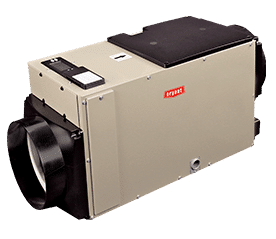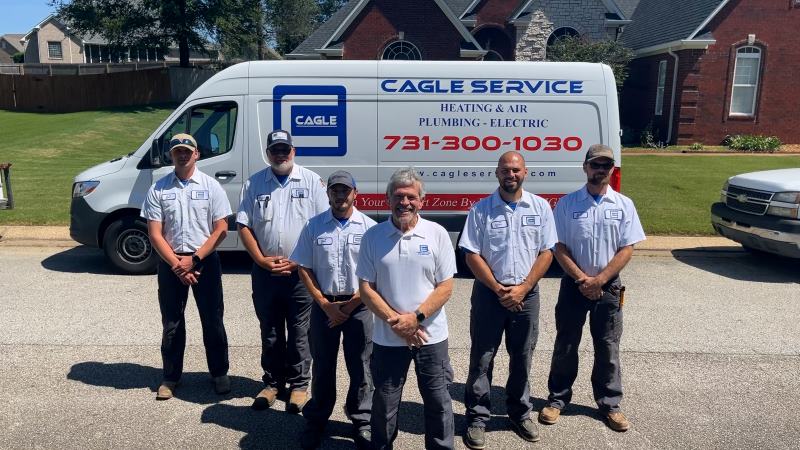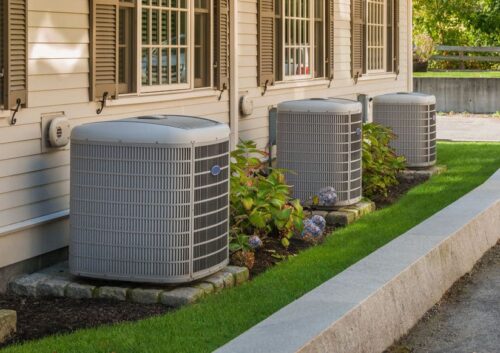In short, yes. Air conditioners do dehumidify the area they are cooling. But how do they remove the humidity? And how much humidity is actually removed by your air conditioner?
These are important questions for those of us who live in naturally humid locations. For example, in the Southern and Coastal states humidity is a constant attribute of the environment all year long. And I personally don’t like it, but that’s another story!
So, experiencing high humidity levels in our homes and businesses can be something that we deal with in these humid locations. The problem with this is that when humidity levels are high inside, it makes it seem hotter than it really is. Think “heat index”. It has the same effect as it does with the outside “heat index”. This can cause us to run our air conditioners at a lower temperature simply because the humidity makes it feel hotter than it really is. This leads to higher energy bills and more money spent. High levels of moisture can also increase the chance of mold and mildew, along with other issues.
So, removing the humidity from our indoor environment is important, as you can see. Now, let’s get into some important questions to answer as we move forward.
How Do Air Conditioners Remove Humidity?
When an air conditioner pulls in air from inside your home or business, it blows that air over evaporator coils that contain cool refrigerant. This refrigerant absorbs the heat from the air that was pulled in from inside. Then, the remaining cool air is returned to the inside of the home or business. During this process, some moisture is also pulled in with the air and it is retained. This moisture eventually condensates and drains out of the ac unit via the “condensate drain”. This is a small process of dehumidifying.
Related: What is an AC Evaporator Coil?
How Much Humidity is Removed?
Air conditioners do provide some removal of humidity, but not enough to thoroughly dehumidify. Air conditioners weren’t designed to remove humidity, but to remove heat and provide us with cool air. An air conditioner simply, as a byproduct, removes some humidity while it is performing it’s main job of cooling the indoor environment. So even though air conditioners dehumidify to an extent, to effectively dehumidify the inside of a home or business, more measures need to be taken.

Do You Need a Dehumidifier?
The first thought most people have when it comes to dehumidifying an indoor area is to use a dehumidifier. With good reason. This is what dehumidifiers were designed for – to remove moisture from the indoor air. So, if you are wanting to remove the humidity from your indoor environment, a dehumidifier is definitely a solution to consider.
There are different types of dehumidifiers. There are units you can use for single room applications and there are also whole-home, larger dehumidifiers. You’ve probably seen single room dehumidifiers before. They are typically little portable electric units that run for a period of time and then shut off. As they retain moisture, their storage trays which store the retained moisture have to be emptied ever so often.
A whole-home dehumidifier, pictured above, is a larger unit and it is able to dehumidify the entire indoor environment. These units cost more but they perform a much bigger job and require less maintenance (such as emptying the storage tray) than compared to a smaller single room unit.
While we recommend the larger whole-home dehumidifiers, both of these solutions will cause the indoor temperature to feel cooler and the air conditioner won’t have to run as often to keep the indoor temperature at such a low temperature. You will likely be able to raise the set temperature of the thermostat. Remember, humidity makes it “seem” hotter than it really is.
Related: Best Thermostat Setting for Summer
Are There Other Options?
If you aren’t ready to purchase a dehumidifier, there are things that you can do to help relieve the effect that high humidity causes.
Run ceiling fans
In rooms that you or others occupy, run the ceiling fans while they are occupied. The cooling effect that a fan provides by moving air across your body helps with the “heat index” factor. According to the Department of Energy, running a ceiling fan in an occupied room can make a 4 degree difference in the “feel” of the temperature. That’s a lot!
Run exhaust fans and vent fans
When you are using your stove, run the exhaust fan to help remove moisture that is produced from cooking. Running the vent fan in the bathroom when showering also helps remove moisture that is produced from the shower water.
Also make sure your dryer is venting outside instead of inside when drying clothes. Yes, there are people who do not have their dryer venting outside. Instead, all of the moisture from the wet clothes is dispersed throughout the indoor area of the home or business.
These steps won’t relieve all of the humidity, but it should help some. A dehumidifier is still the ultimate solution.
Do you experience high humidity in your home or business? Or, have you experienced it in the past and have since dealt with it? What was your solution?
Comment below. We’d love to hear from you!



